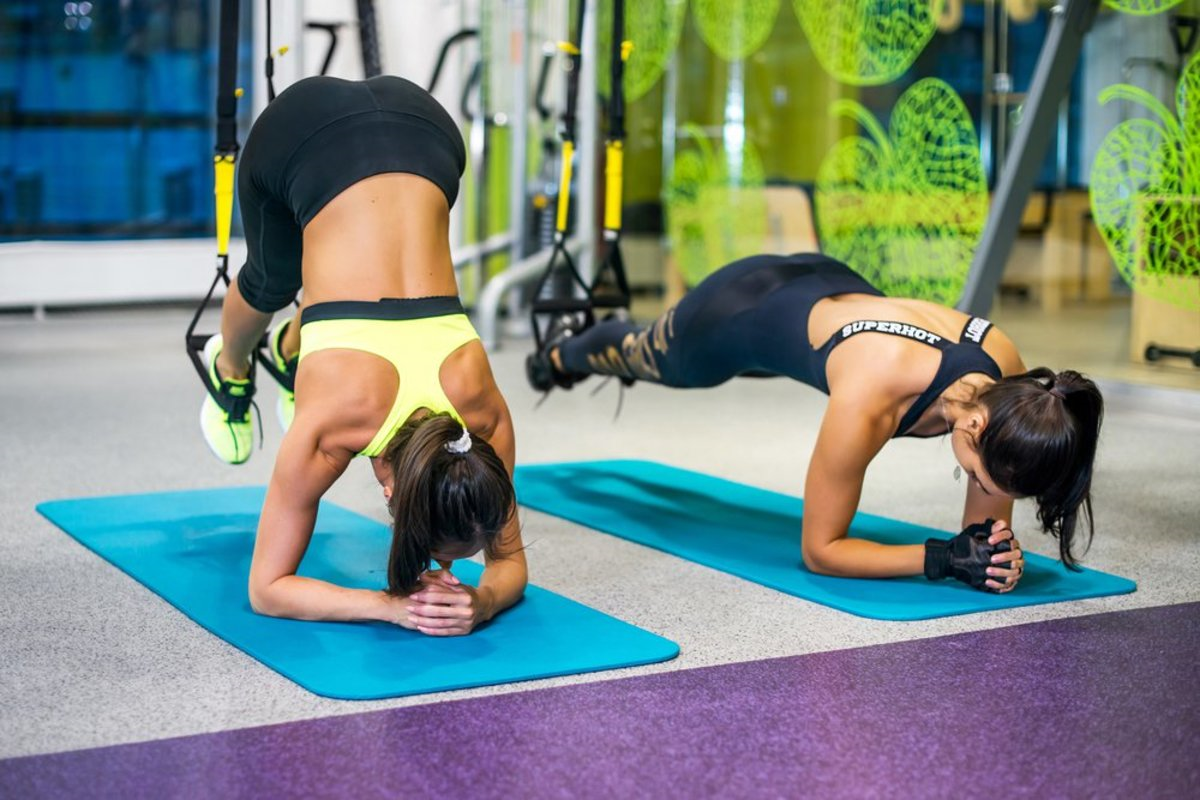15 training boosters for running sports
Dom Cadden
If you’re training to improve strength, power and agility at home, even just a few pieces of exercise equipment can give you heaps more exercise options and ways to progressively increase difficulty. Or it can clog up your cupboard and even entire spare rooms. So here’s ‘bang for your buck’ assessment of equipment, especially with runners and people in sports that involve running.
Unconfuse Health offers coaching packages for your sport, activity or physical goals. We can set exercise programs to work with whatever equipment you can access. Details here.
Jump rope
Who doesn’t have a jump rope they’ve forgotten about? It’s probably in some retired, mouldy gym bag or it’s fallen down the back of the bed after you used it as makeshift restraint. They’re like pens, or your first-born children – new, more exciting things keep coming along, but we keep going back to them and never quite give up on them. Jump ropes are not just great for interval training, there are many drills you can do to help agility and footwork. You can do a variety of drills to strengthen your calves and around the ankles, plus jumping rope properly helps you develop a fast ground contact time for a better foot strike. They cost bugger-all and take up little space, so they have a high bang-for-buck. Want to hit your upper body at the same time? Get a set with weighted handles.
Verdict: Underrated and compact must-have for calves, feet, agility and fitness.
Weighted vest
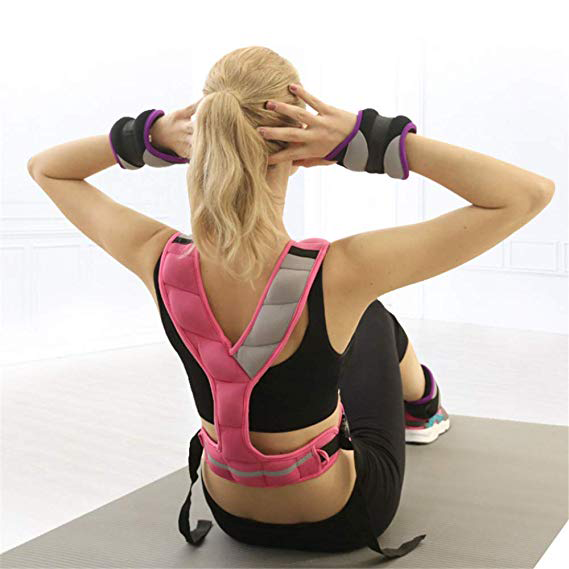
These create some confusion, and I’m not just talking about the panic and chaos when people mistake you for a suicide bomber; these vests are best for doing exercises, not for running. The vests are usually made out of many small removable small weights, so it’s best to buy the heaviest and most comfortable vest and then adjust the weights to suit you. When you wear a weighted vest and do standing, jumping or planking exercises, almost everything becomes a core exercise due to the weights destabilizing you. This makes them especially good for trail runners. Chuck on the vest and you can do a whole workout that hits your entire body.
Verdict: Worthwhile investment if you’re serious – compact and offers huge variety of exercises, even as you get stronger.
Ankle weights
These insidious Stalinist bastards are not as girly as they look. Hook them on and they can frog march you to the gulag of leg and butt pain almost as fast as you can say “Solzhenitsyn”. A couple 1kg – and God have mercy, 2kg – ankle weights will be enough to target problem areas such as the glutes, abductors, abdominals and hip flexors, while giving you just enough resistance to butch up you plyometric and skipping drills.
Verdict: Cheap and useful for problem areas.
Adjustable dumbbells

Compact and versatile, a set of adjustable dumbbells with a good range of weights will set you up for dozens of exercises and push you to get stronger as you add more weights. Even deadlift, squatting and modified Olympic lifts can be done with dumbbells, so unless you have a lot of space, a barbell looks like an incontinent elephant by comparison. Choose a set with a long neck to add on weights and clips or screws that secure really tight (especially for jumping exercises) and quick and easy to put on. Just starting out? Look for a set of refillable dumbbells (try Daiso stores) – these are very cheap, hollow plastic dumbbells that you can fill with water, sand, rice, human fat – whatever you can fit in the hole.
Verdict: Great all-rounder for running sports that give flexibility as you get stronger.
Sand bags
There’s a certain charm about having something that appears to be a body bag for infants lying around your home. “That? Well, I warned my sister I wasn’t the best person to babysit her kids… but a two out of three survival rate’s still a pass, right?” But seriously, these G.I. Joe scrotal accessories are very handy and have a few advantages over barbells for home exercise. They’re more compact, they have other practical uses, and not as much technique or flexibility are required to sit them on the front or rear of your shoulders for squatting, lunging, jumping or pressing movements. You can also throw or drop them without as much potential for damaging your floor or other people, plus you can walk or run with them as a power drill – which is very handy for obstacle course racing or football.
Verdict: Practical and compact for leg power, but limited by set weight (unless they are refillable). Only use if your back and core are reasonably strong and healthy.
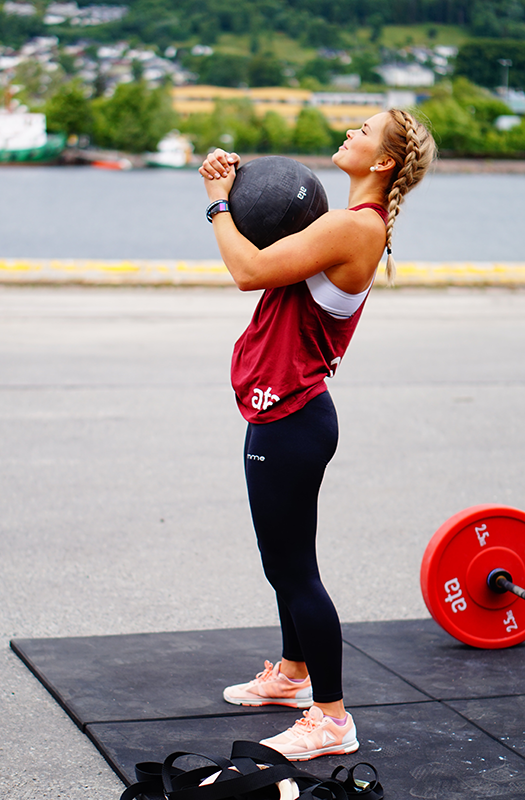
Medicine ball
Medicine balls are good for exercising the core and the legs, plus you can lie with them under your shoulder blades to do bridging exercises for the glutes and hamstrings. Choose one that’s on the heavy side rather than a light one that will lose its usefulness as you get stronger. Better still, have more than one. I always prefer the hard bouncy medicine balls because they are they are better for throw-and-catch drills against a wall (for the core) and slams, which is where you turn to the side and hurl the ball at the ground with both hands, like it’s your new lover’s wedding photo. Sure these make it easier to fracture a finger, but just don’t use it as a basketball.
Verdict: Good for core and power exercises; limited by set weight.
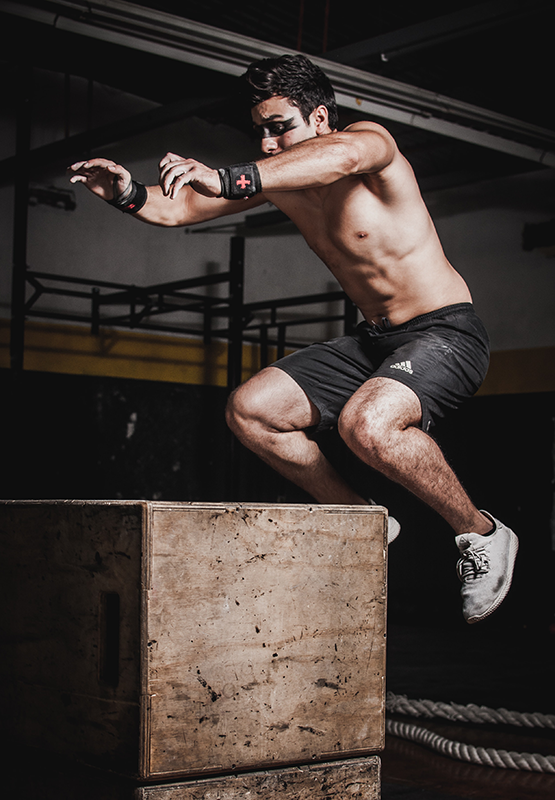
Solid box or step or bench
Cats and cricketers know the value of a good box, and so should you. Aim to have something that is at least as high as your knee (bonus if you have boxes of different heights) and strong and stable enough for you to at least stand on without it wobbling – and preferably strong enough to jump on. Use it for a smorgasbord of jumping and stepping drills, leg strengthening exercises and getting down that suitcase that’s on top of the wardrobe.
Verdict: Just get one – you find a use for it even if you get fat and lazy.
Resistance band
Resistance bands are shaped like giant rubber bands and are often 90-100cm long. They’re cheap, take up no space (good for travelling) and come in different levels of resistance, so it’s best to stretch out and get more than one. They’re good for rehab, stretching, posture and targeted glute isolation exercises. However, they won’t challenge you too much for other exercises once you have a decent strength base, and you’ll just end up using them to catapult magazines across the living room. Mini-bands (about 30cm long) have more limited usefulness, typically for rehab exercise and a couple exercises for gluteus medius (deep mid-butt muscle) called ‘clamshells’ and ‘lateral walks’. These are very worthwhile for runners of all levels and strength as they help with injury prevention. Another type to consider is one of those long, heavy duty bands that look like they’re a fan belt for The Capitalist Machine. If you train with a partner, loop it around your waist and have a partner try and resist you while you try to sprint. If they truly love you, they will not let go of the band so it thwacks you in the back. Even for giggles.
Verdict: Good travellers, fairly versatile; limited use for intermediate to advanced.
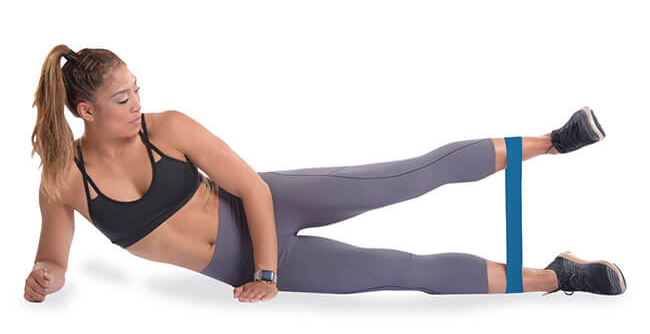
Tyres
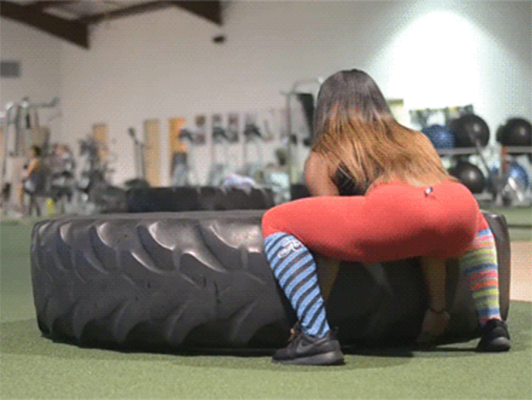
The tyre flip (with one hand or both) is a great drill for leg, glute and core power, and good for conditioning. If the tyre is big and solid enough, you can also use it as a plyometrics box and for step-up exercises. On the downside, spiders and lizards tend to live in them and workout options are few, unless you want to roll it down a hill then run and tackle it before it crushes your neighbour’s car (good simulation of competition pressure). The plus side? You can often snag them for free.
Verdict: A one-trick pony; but that trick is good, and you might get one free.
TRX
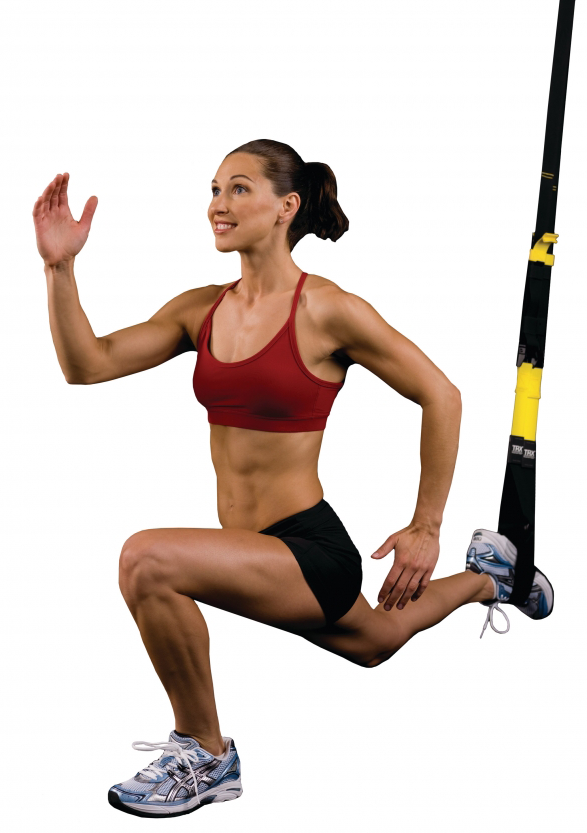
Look past the foreboding, noose-like arrangement of the TRX (and imitations) and you’ll find that you can use it for a wide range of graduated exercises (many of them related to Pilates) for both upper and lower body. Runners especially will benefit from the extra core and hip stabilisation required to use this contraption. TRX exercises can be pretty hardcore – someone with intermediate or advanced level strength will get more out of them than a beginner. You get a lot of exercises for your money, but the catch is that you need a fair whack of space for them. You loop them over a high horizontal bar or rafter, although some versions now come with a Door Anchor accessory (or this can be bought separately) so you can throw them over the top of a door, close the door, and then it’s ready to support the weight of your body.
Verdict: Versatile if you have the right set-up and space to use them; best for intermediate to advanced.
Balance board
These kind of look like a failed hoverboard, or a very young Elon Musk’s attempt at an alternative skateboard. Balance boards do one thing, but they do it well. Many long distance runners have lower leg and foot issues because they forget how to use the foot muscles – this platform of panic helps you remember. When you try to balance on the board (you should do this barefoot at least some of the time), you also strengthen the stabilising muscles around ankles. All this makes them good for people who are prone to foot, ankle and Achilles injuries, but if you live near a beach, they’re probably no better than walking or jogging barefoot in soft sand.
Verdict: Very good for foot, ankle and Achilles issues or for sports that require rapid changes of direction.
Battle ropes
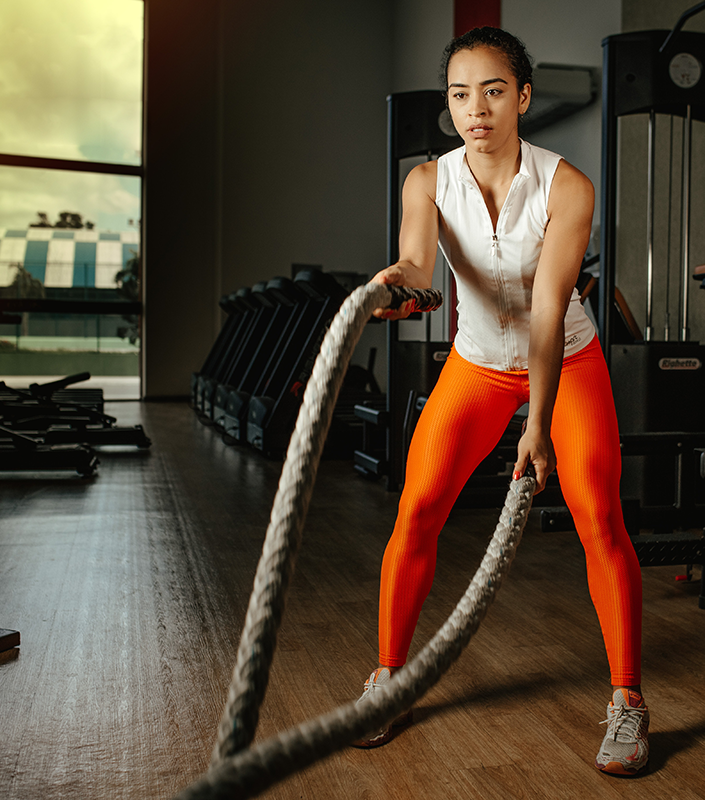
For anyone in a running sport, battle ropes should be used with an explosive jumping action, stepping or twisting to work hip power and core strength. If you stand flat-footed and wave your arms about, you’ll just burn up your arms and shoulders. If you’re training with a partner or group, someone can try to skip as you do slams and waves – that will keep you interested, but might make your workout partner infertile. Great for conditioning – short sets can be as hard as hill sprints. The downside – you need a lot of room and a hardy surface, and possibly deaf or absent neighbours, especially if they live below you.
Verdict: Good for conditioning and core/hip power if you have the space, but not necessary.
Chin-up bars + dip bars
Got enough room to swing a cat? Yeah, a set of free-standing chin-up and dip bars will use up all that, but then chin-ups and dips are the gold bullion of upper body exercises, and hanging exercise are my number one preference for abdominal exercises. Not much use for legs and glutes, though. Add a long resistance band to give you a leg up until you’re strong enough to lift your own bodyweight.
Verdict: A space-hog that is great for upper body for the intermediate to advanced.
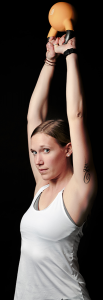
Kettlebells
I never understood why kettlebells cost so much, which is a shame, because you need more than one. You can actually do all the same exercises with a dumbbell, although a kettlebell has a slight advantage if you’re swinging or rotating the weight. Still, they make very butch doorstoppers. Used as intended, they are excellent for generating speed and power through the glutes.
Verdict: Pricey – best to save for the gym where you have them in a range of weights
Swiss Ball (Fit Ball)

Over the years, the streets have been littered with thousands of lifeless Swiss balls, hopelessly stranded like beached jellyfish as they await the garbage collection. There’s a lesson there. If you’re not-so mobile, they (i.e. Swiss Balls, not jellyfish) can be good for stretching and some abdominal, core and hamstring exercises, but perhaps their best use is as a defacto exercise bench that challenges your stability. Still, they take up space and tend to roll around the house following you like some height and weight-challenged gimp pervert – if you’re OK with that, then fine. Use them for dodgeball, the games finish quicker that way.
Verdict: Largely overrated, but useful for beginners and back mobility.
Unconfuse Health offers coaching packages for your sport, activity or physical goals. We can set exercise programs that will work with whatever equipment you have access to. Details here.


